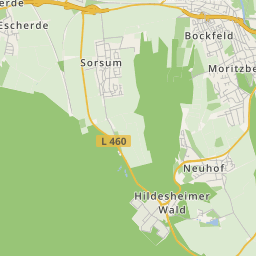












Alfeld is situated in the Leine mountainous region between the Leine river in the west and the Seven Mountains (up to 395m high) in the northeast. The surrounding mountainous region is being called Alfelder Bergland or Ith-Hils-Bergland (up to 480,4m high).
Even without having documentary evidence, it can be assumed that Alfeld as a town, is a parallel foundation of the Hildesheim Dammstadt. Pointing to this is the systematic construction of the city centre inside the rampart, the parallel existence of a Nikolai church and the documented mention of Flemish settlers in both settlements at the beginning of the 13th-century. The coat-of-arms are also nearly identical. Alfeld's coat-of-arms differs from the Dammstadt one only by the blue shield boss, which identifies traditional as Blue Stone.
Alfeld's town charter may have been bestowed between the year 1220 (where Frederick, the Holy Roman emperor guaranteed sovereign rights in the Confoederatio to the clergy princes) and the year 1258 (the year, when Alfeld was mentioned as oldest preserved town). In the year 1315, Alfeld's town charter was given to the town of Dassel.
In the past, Alfeld belonged to the bishopric Hildesheim. After Hildesheim's monastery feud (1519–1523), the town came to the principality Braunschweig-Wolfenbüttel. Looking back, the Braunschweiger time was Alfeld's golden era, in which Alfeld's economy and culture were blooming. During the Thirty Year War, the well-known military leaders of the Catholic league Tilly and Wallenstein met in Alfeld's district Limmer for talks on the 13th of October 1625. In 1643, Alfeld reverted back to the Hochstift Hildesheim after the separate peace of Goslar. As a result of the German medialisation, it came to Prussia for and short time in 1803, then to the kingdom Westphalia, district Hildesheim, after the Congress of Vienna, the town was mandated by the kingdom Hanover in 1815. The result of the German War, it was annexed by Prussia in 1866, to which also Alfeld belonged until the end of the 2nd World War. This displeased the widest part of the Welfen-loyal population. Since 1946, Alfeld belongs to the state of Lower Saxony. Alfeld wasn't destroyed during the 2nd Worlds War.